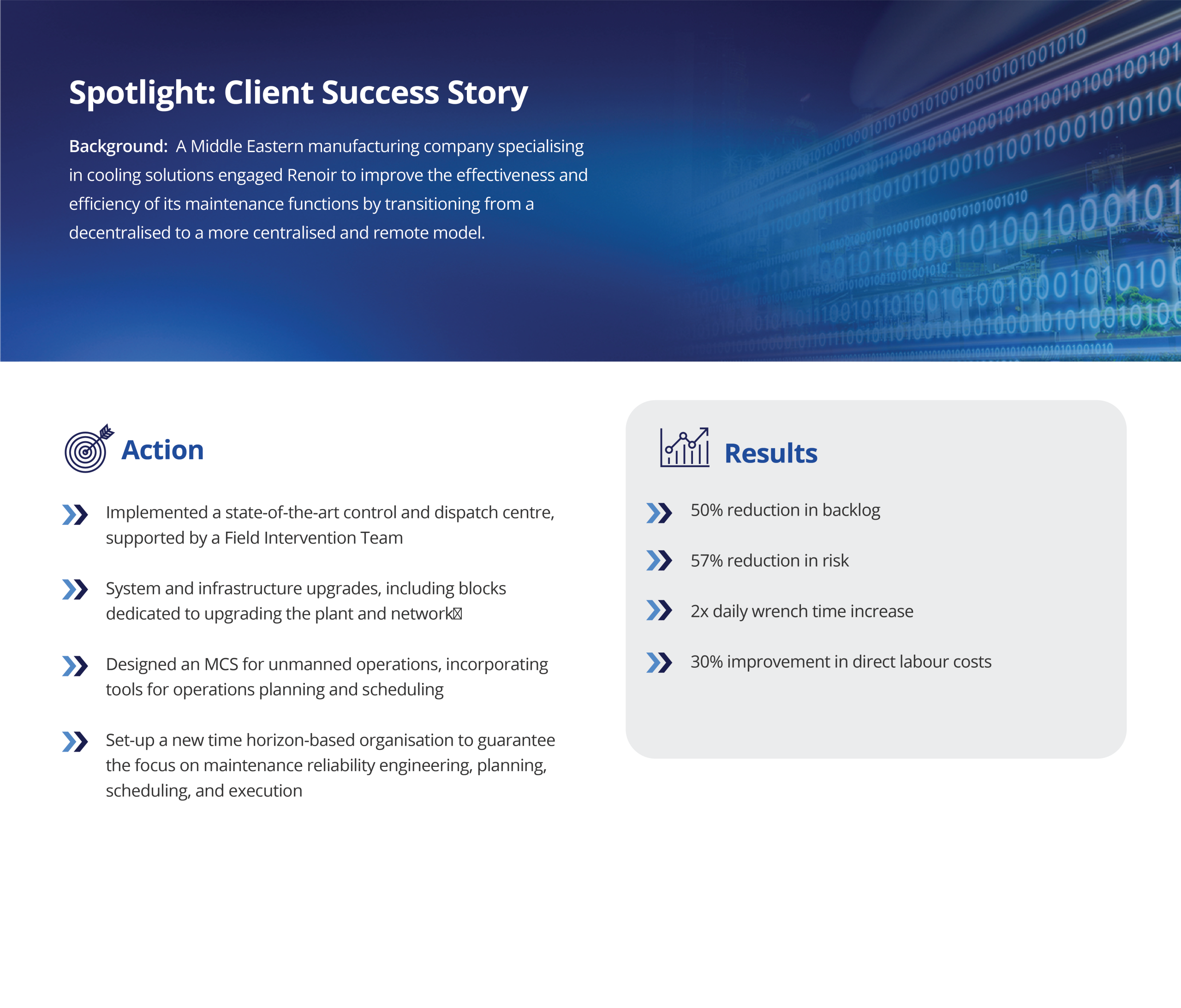Digital Transformation Without Discipline Won’t Deliver
Across the GCC, digital transformation is shifting from aspiration to mandate. Saudi Arabia’s Vision 2030, the UAE’s Operation 300bn, and Bahrain’s iFactories programme all reflect a regional shift toward high-value, technology-driven manufacturing. Governments are using grants, industrial financing, tax incentives, and digital maturity assessments to accelerate Industry 4.0 adoption.
But despite the support available, many manufacturers still see limited performance improvement from their digital investments. ERP upgrades, isolated automation projects and new dashboards often run parallel to existing ways of working, rather than transforming them. Data remains siloed, decision-making is slow, and productivity is dependent on manual interventions.
The trend is clear: manufacturers that treat digital transformation as an operational and cultural shift, rather than an IT upgrade, are pulling ahead. Those who continue to digitise without execution discipline risk higher complexity, rising cost, and diminishing competitiveness.
Three strategic levers make the difference: real-time information systems, end-to-end supply chain digitalisation, and a workforce that can adapt and own new ways of working.
1. Build a Real-Time Performance Backbone
The foundation of any successful transformation is the ability to see and respond to performance in real time. Many Middle Eastern manufacturers still rely on weekly or monthly reports, making course correction slow and reactive. Technology amplifies value only when management routines are built around timely, actionable data.
A robust performance backbone brings together:
- Integrated Management Control Systems (MCS): Standardised KPIs and dashboards that align operations, maintenance, quality and planning.
- Clear KPI hierarchy: Linking line-level indicators such as throughput, waste, downtime and manpower utilisation to financial and operational outcomes.
- Short-interval control: Daily and weekly performance reviews, enabling issues to be addressed before they become losses.
- Digital planning and scheduling tools: Allowing faster scenario planning, better capacity balancing, and earlier identification of bottlenecks.
When this backbone is in place, digital tools stop being visualisations and become active decision systems. Managers can intervene earlier, supervisors can lead with data, and leadership can see the impact of decisions at the plant level.
Government incentives then become accelerators — funding automation, AI, or system upgrades that already have a clear operational purpose and a measurable payback.

Improve sales efficiency with optimised systems & processes

Better Manpower Planning and Work Order Processes for x4 ROI

Cost savings through operational efficiency for manufacturer

Paper mill cuts material loss by 300% with maintenance planning
Ready for a change in your organisation?
2. Digitise the Entire Supply Chain, Not Just the Factory
Many digital programmes focus heavily on the shopfloor. However, major value leakage often occurs in the areas of procurement, warehousing, logistics and inventory control.
GCC supply chains continue to face long lead times, volatile freight costs and rising expectations for delivery performance. Digitalising the extended supply chain improves resilience and competitiveness by reducing variability and enabling faster decisions.
High-impact steps include:
- Digital procurement and vendor management: Rationalised supplier bases, structured confirmation planning, and consistent specifications across sites.
- Unified inventory models: Reclassification of slow-moving and obsolete stock, better demand forecasting, and new stocking strategies to reduce excess capital tied in materials.
- Technology-enabled logistics: Consolidated warehousing, improved truck utilisation and better visibility of inbound/outbound flows.
- Data-driven planning: Integration of production, maintenance, and sales forecasts to reduce both over-production and stock-outs.
When supply chains are digitised end-to-end, manufacturers are better positioned to benefit from customs exemptions, industrial financing and national transformation funds that reward operational efficiency and export readiness.
3. Build a Workforce That Can Adapt and Drive Change
Digital transformation succeeds only when the workforce understands, adopts and champions the new ways of working. Across the region, the biggest barrier to Industry 4.0 adoption is not the cost of technology — it is insufficient capability, unclear responsibilities, and weak cross-functional coordination.
Manufacturers that succeed invest in:
- Hands-on training: Practical coaching on systems, dashboards, root-cause problem solving and short-interval control.
- Clear governance: Project Management Offices (PMOs) and Management Action Teams (MATs) that create accountability, maintain discipline and accelerate decision-making.
- Role clarity: Updated RACI matrices, aligned KPIs and clear ownership at every level of the organisation.
- Culture-building routines: Regular performance dialogues and structured feedback loops that reinforce continuous improvement.
A digitally capable workforce multiplies the value of every investment — ensuring that new tools change how supervisors lead, how planners plan, and how decisions are made across the plant.
 Turning Incentives into Results
Turning Incentives into Results
The Middle East has entered a period where digital adoption is not just supported, it is expected. But success will depend on execution: the strength of data foundations, the integration of the supply chain, and the capability of the workforce. Manufacturers that act now will gain a structural advantage — faster throughput, leaner inventory, better reliability and greater competitiveness in regional and global markets.
Renoir has delivered more than 200 digital and operational transformation programmes globally, including extensive work with manufacturers across the GCC. Our approach embeds change with your teams, ensuring systems are adopted, routines strengthened, and improvements sustained.
Accelerate digital transformation and convert investment into measurable operational gains










